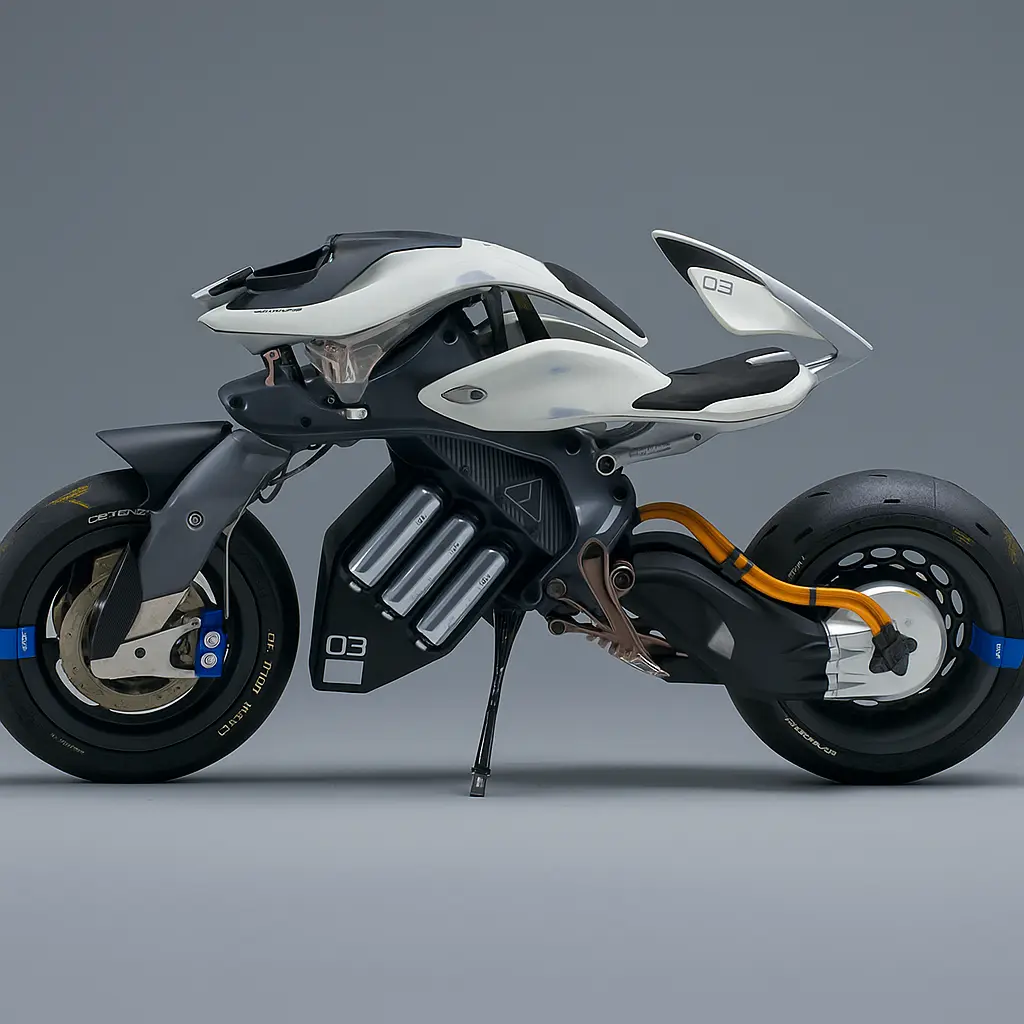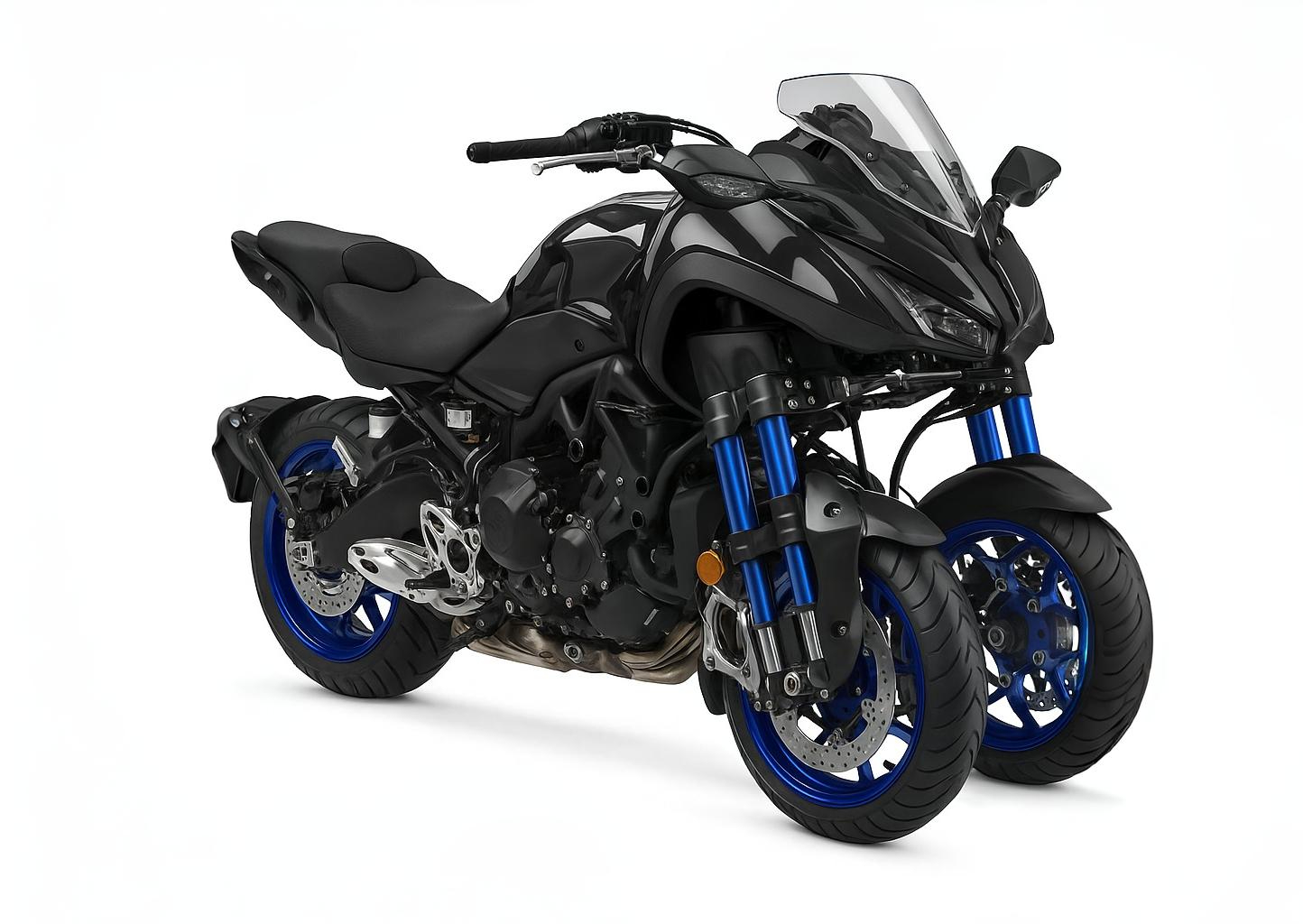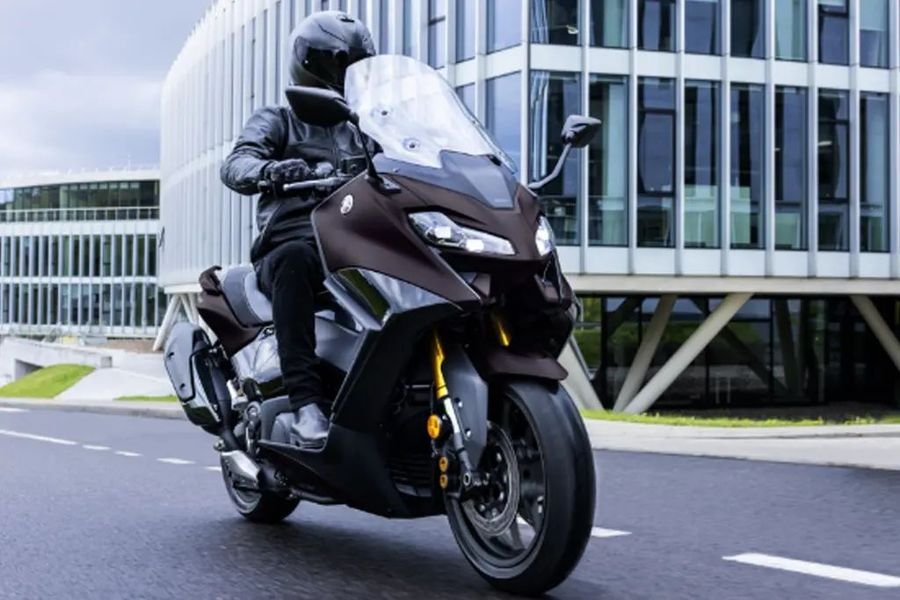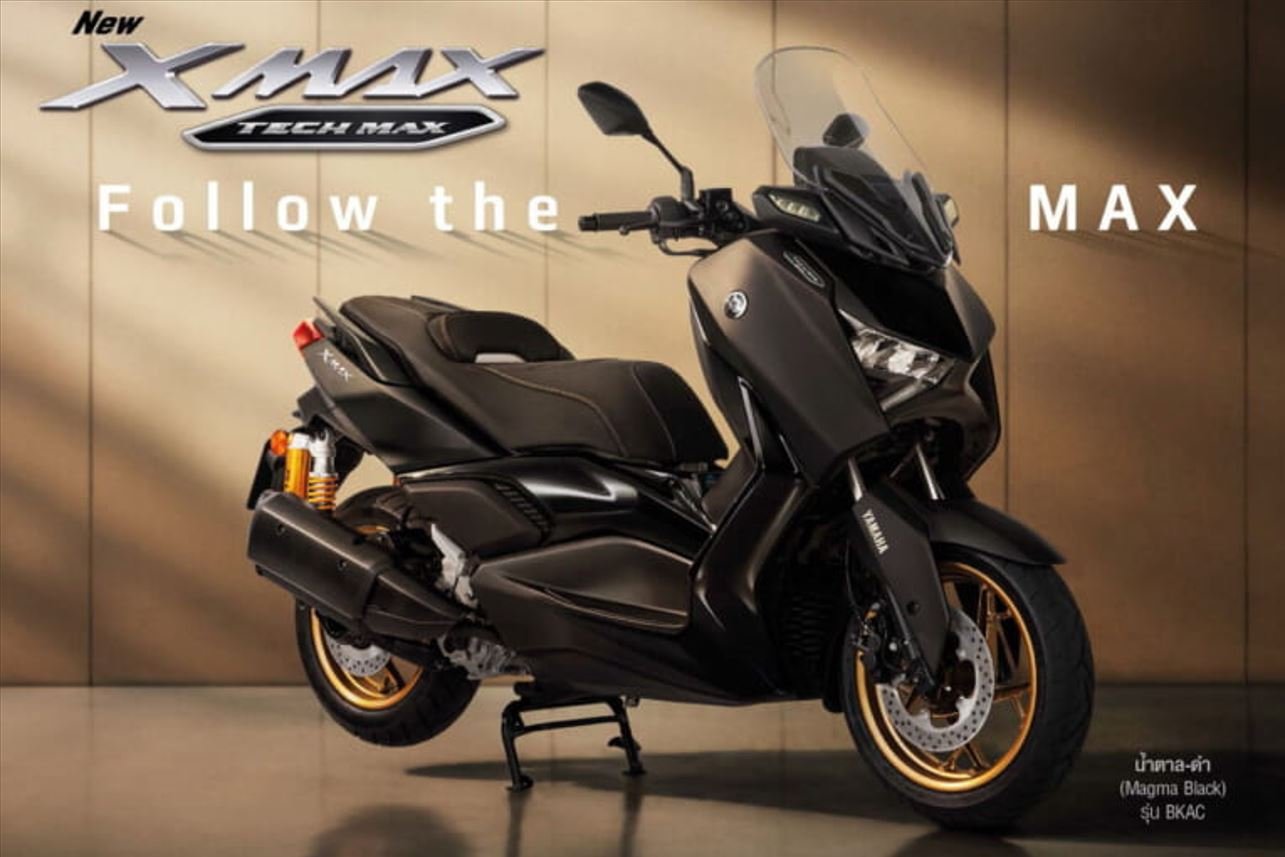Basic Info
-
Make: Yamaha
-
Model: MOTOROiD (2017 concept); MOTOROiD 2 (2023 evolution)
-
Year: Original revealed in 2017 (awarded in 2018); MOTOROiD 2 unveiled in 2023
Powertrain & Performance
-
Engine Type / Configuration: Electric hub-motor in rear wheel
-
Fuel Type: Electric
-
Horsepower: MOTOROiD 2 reportedly in two output variants: ~15 hp (11 kW) and ~47 hp (35 kW)
-
Torque: Not publicly disclosed (conceptual prototype)
-
Top Speed: MOTOROiD 2 estimates: up to ≈200 km/h (~125 mph) per one source
-
Fuel Economy / Range: MOTOROiD 2: ~300 km (~186 mi) range; 30 kWh battery capacity mentioned
Chassis, Transmission & Dynamics
-
Transmission: Single-speed (1-speed electric)
-
Weight: MOTOROiD 2: ~220 kg (~485 lb)
-
Fuel Tank Capacity: Not applicable (battery-powered)
-
Cooling System: Presumably liquid-cooled electrical systems (typical EV architecture), though not specified
Physical & Ergonomic Details
-
Body / Exterior Color: Translucent black/white with semi-transparent panels on the original; mostly white/black scheme
-
Seat Height: Not published
-
Weight Distribution Control / Self‑balancing: Yamaha’s AMCES—Active Mass Center Control System—shifts battery and swingarm to maintain balance and allow autonomous upright posture
-
Suspension / Brakes:
-
Front: Single disc brake (original); MOTOROiD 2 specifics not disclosed
-
Rear: Likely hub motor and swingarm braking, though not specified
-
Wheels & Tires
-
Tire Size: Not specified (hub-motor rear, concept spec)
Steering & Control
-
Handlebars:
-
Original: Rigid fixed grips mounted to the fork
-
MOTOROiD 2: Also ditch traditional bars—uses fixed grips integrated into the front fork
-
-
Starter System: Electric
-
Instrumentation / Display: Uses image-recognition AI (face, gestures) and haptic hip-mounted interface, no traditional dash
Tech Highlights
-
AI & Recognition:
-
Facial & gesture recognition with multiple cameras (front, sides, rider-facing) Responds to voice or gesture to “stand up,” follow rider, or free-ride
-
-
Human-Machine Interface:
-
Hip-wrapping haptic device for intuitive communication
-
“Leaf Structure” in MOTOROiD 2 allows changing rider posture (sitting, kneeling, centaur stance) global.yamaha-motor.com
-
Summary Table
| Spec | MOTOROiD (2017/18) | MOTOROiD 2 (2023) |
|---|---|---|
| Make | Yamaha | Yamaha |
| Model | MOTOROiD | MOTOROiD 2 |
| Year | 2017/18 | 2023 |
| Engine | Electric hub motor | Electric hub motor |
| Power | – | ~15 hp or ~47 hp |
| Top Speed | – | ~200 km/h |
| Range | – | ~300 km |
| Transmission | 1-speed | 1-speed |
| Weight | – | ~220 kg |
| Chassis tech | AMCES balancing | Improved AMCES |
| Body | Translucent panels | White/black leaf structure |
| Steering | Fixed grips | Fixed fork-integrated grips |
| AI | Face/gesture recognition | Upgraded multi-cam AI |
| Interface | Haptic hip device | Enhanced haptic + posture |
| Brakes | Single front disc | Not disclosed |
| Colors | White/black translucent | White/black |
| Seat height | N/A | N/A |
| Cooling | EV standard | EV standard |
| Instrumentation | Camera & haptics | Similar, no riders’ dash |
Summary
-
These are concept prototypes, not production models—so key numbers (seat height, torque, battery kW‑hr, etc.) aren't official.
-
The focus is on showcasing self-balancing (AMCES), AI interaction, and biomimetic human-machine communication, rather than outright performance.
-
MOTOROiD 2 advances the idea with multi-posture riding, enhanced AI, and a sleeker “Leaf” architecture.




